Sensors in abundance
At the latest since our detailed examination of the board layouts for graphics cards, we know that with the usual tools you can't read out temperatures except the GPU diode. What is sometimes offered as VRM or VRM2 are only return values of the PWM controllers themselves (own temperature), but now really no real readings. But it is also different, as EVGA wants to prove to us.
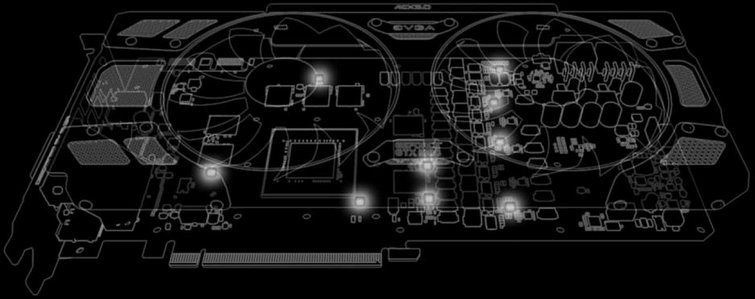
EVGA is now the first manufacturer in the consumer sector to take an unusual path. A total of nine thermal sensors are placed on the slightly modified board at the neuralgic points where hotspots could occur. Their determined values can be displayed and logged with EVGA's Precision software. For hardened control freaks, this is a real paradise, for most a nice technical gimmick and, if you are quite honest, probably a little too much of a good thing, because the really relevant hotspots are actually only sitting in two or three places.
But be that as it may, these values can also be used to implement nice gadgets, such as the asynchronous fan control system introduced by EVGA for the first time, which, in contrast to older solutions, is based on real readings and also enables the software to provide two independent curves for each of the two fans.
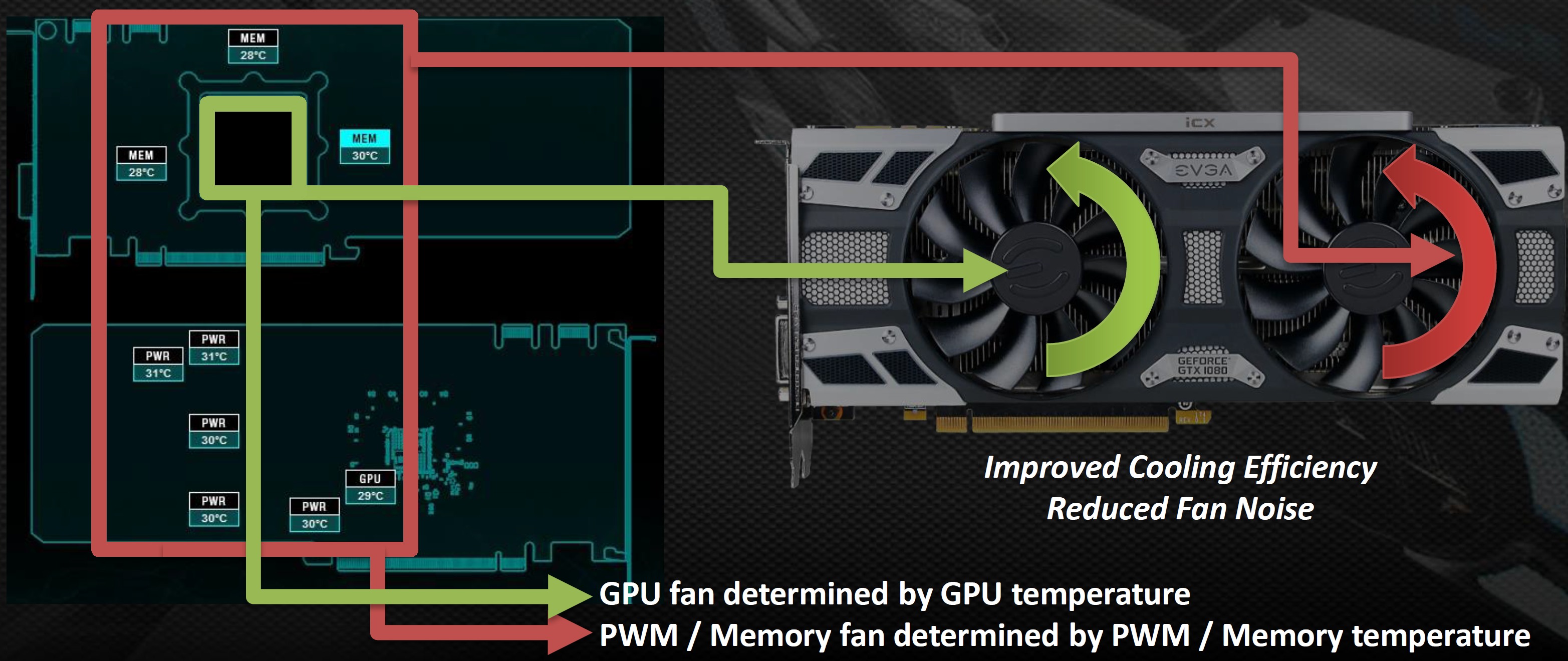
However, the assignment of the respective sensors to the fans is somewhat illogical, because the RAM sits almost predominantly under the left fan, however, the values according to the foil are supposed to influence the right fan via the voltage converter. This is also the case in practice, because the actual hotspot sits on the memory module M7 (as with the FTW) and if you remove the cooling backplate, only the right fan starts to rotate more strongly, as the RAM becomes hotter than the voltage converter modules. We have already informed EVGA about this behavior, because this way you cool the MOSFETs as far as Siberia, but get the memory hardly cooler.
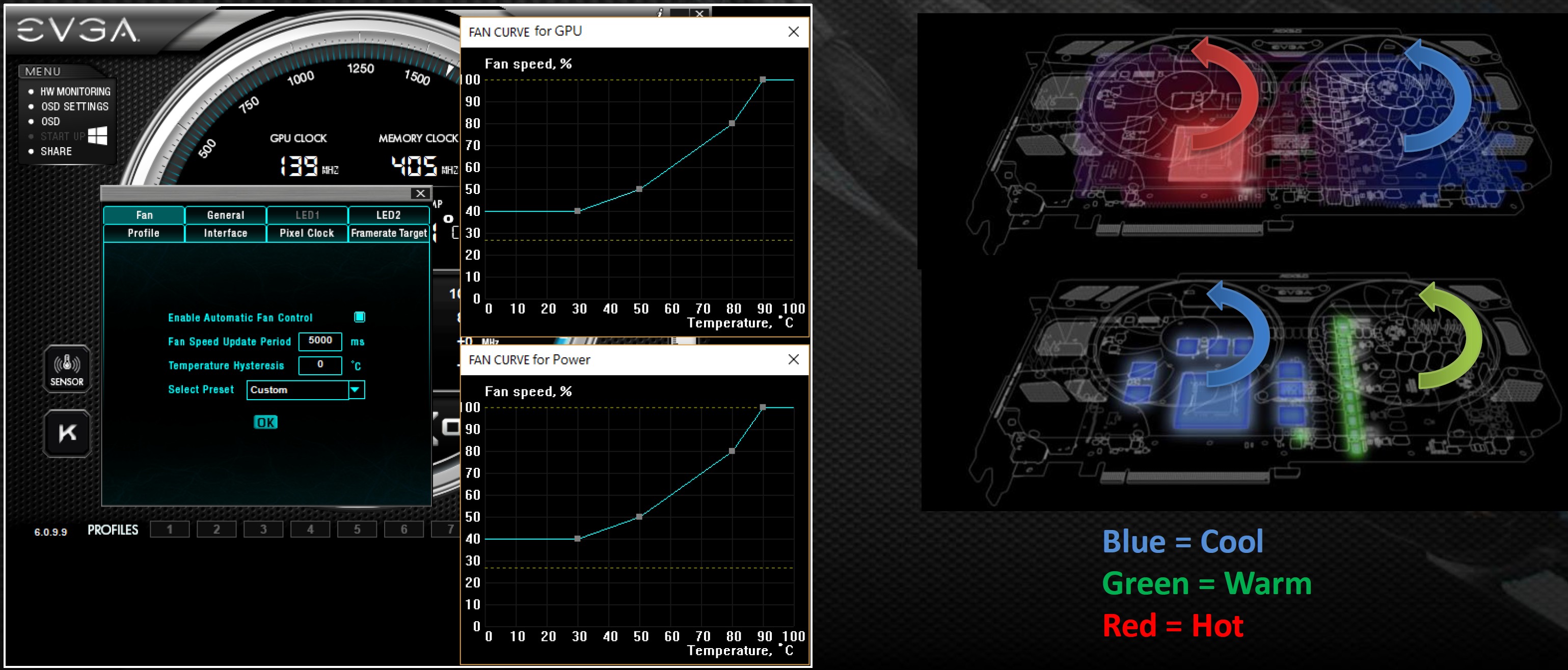
But we do not want to prejudge our tests and first of all deal with the technical realization. With Sonic 8-bit Flash-Type Micro controllers, EVGA relies on a pretty successful solution to capture sensor values in near real time. A total of nine small thermal sensors are placed above and below the board at the possible focal points.
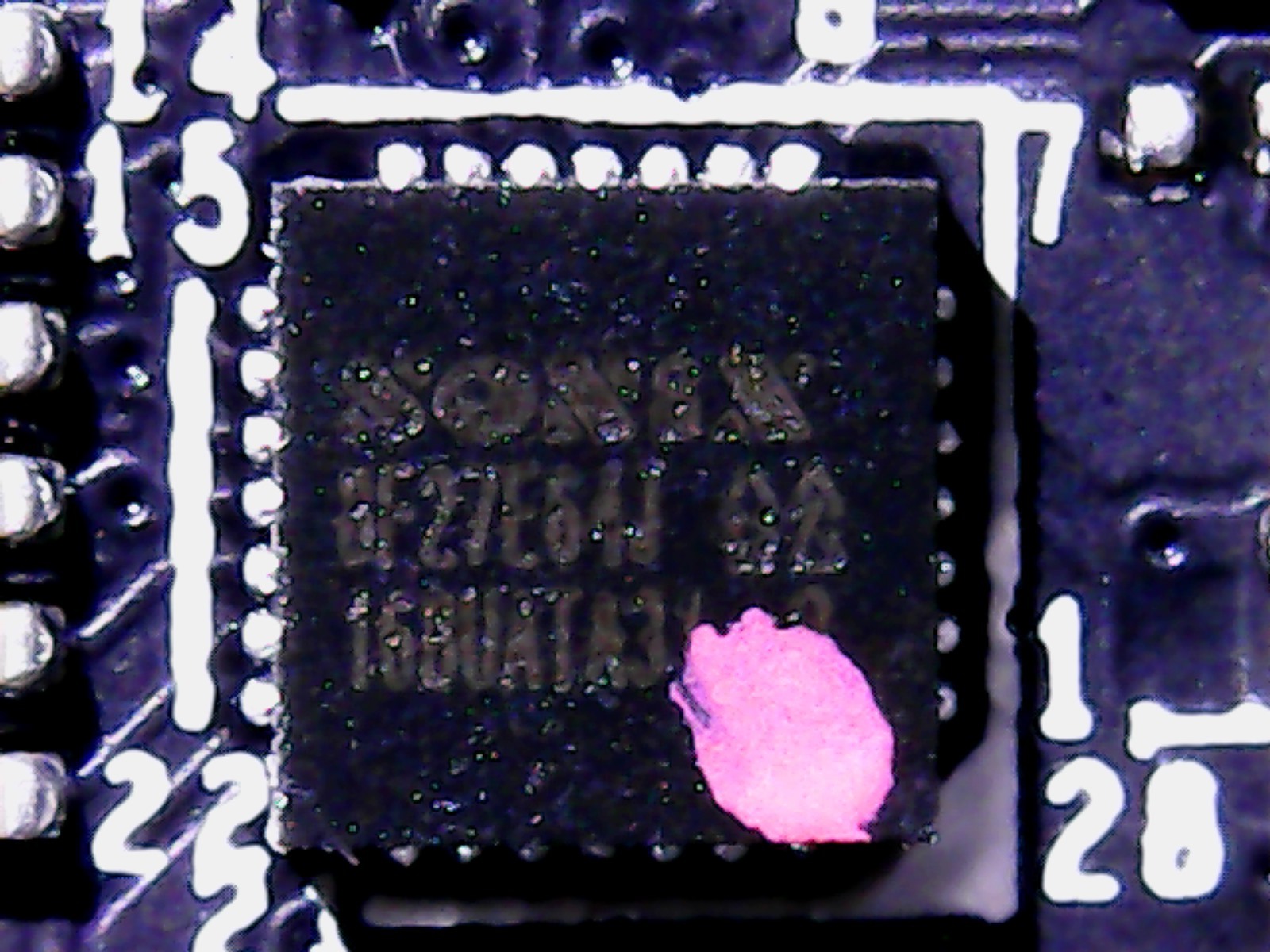 |
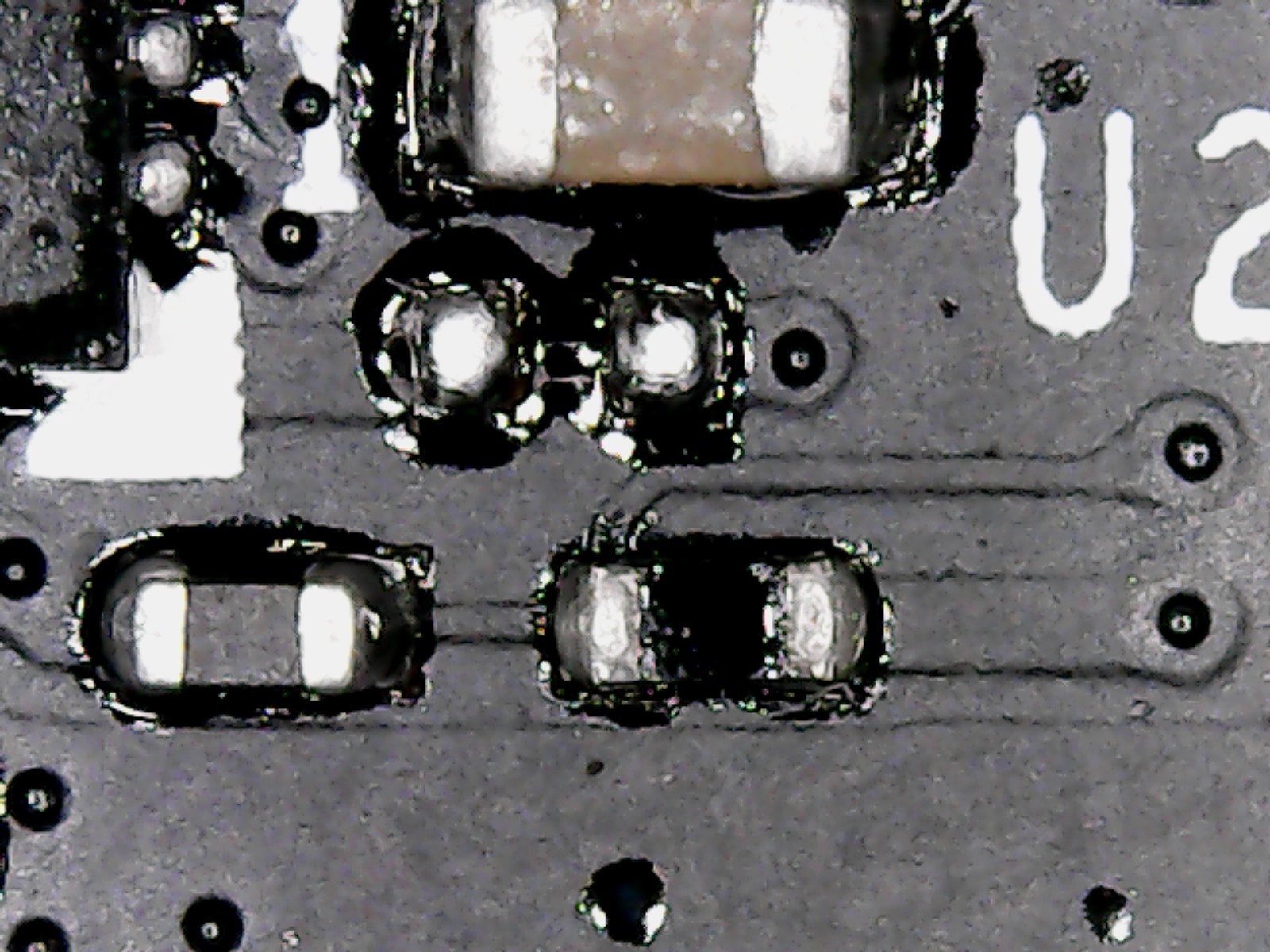 |
In addition to the sensors in the converter trains for the GPU right next to the MOSFETs (picture top right), there are also sensors in the GPU socket (bottom left), as well as near the memory modules (bottom right).
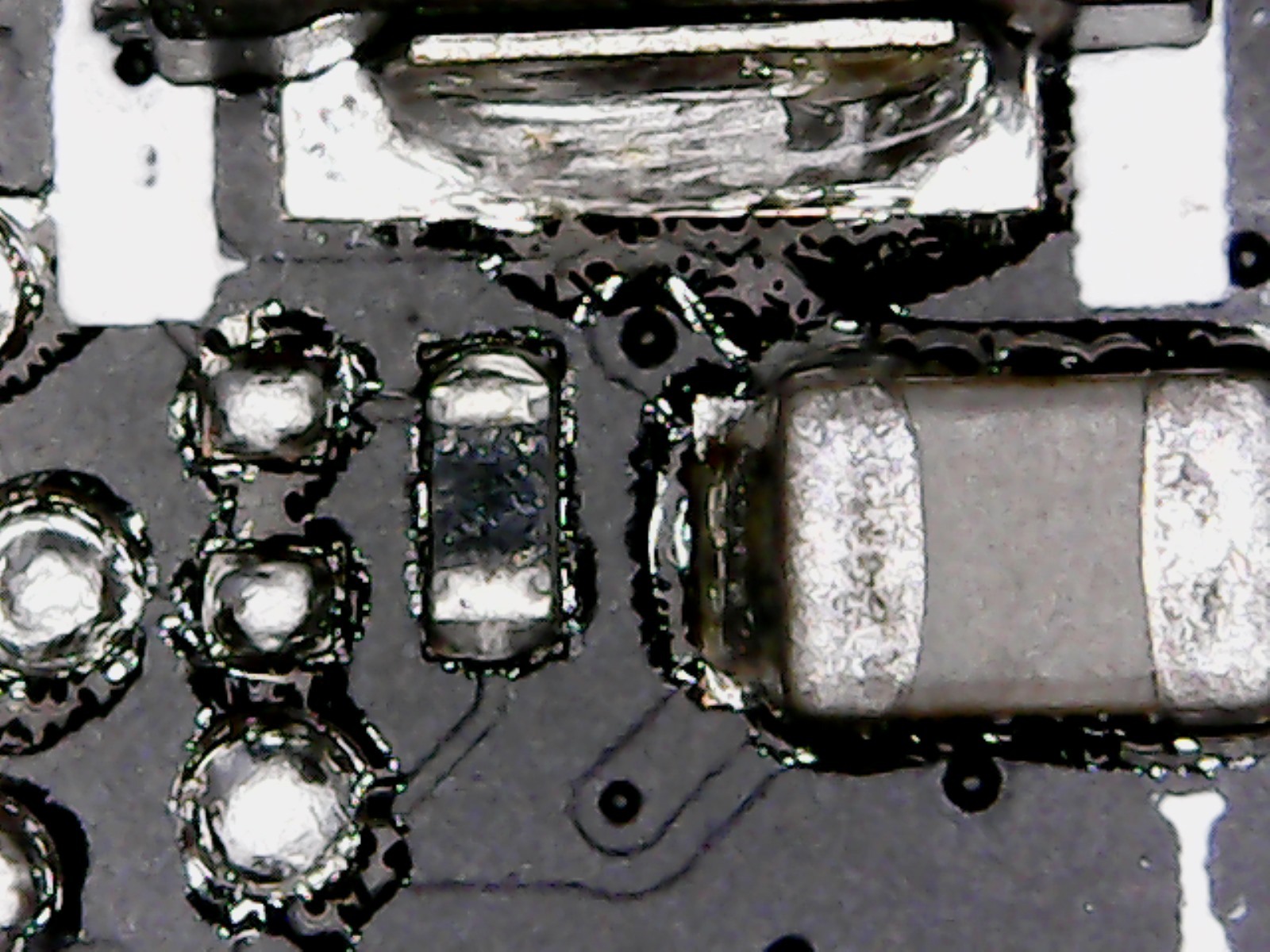 |
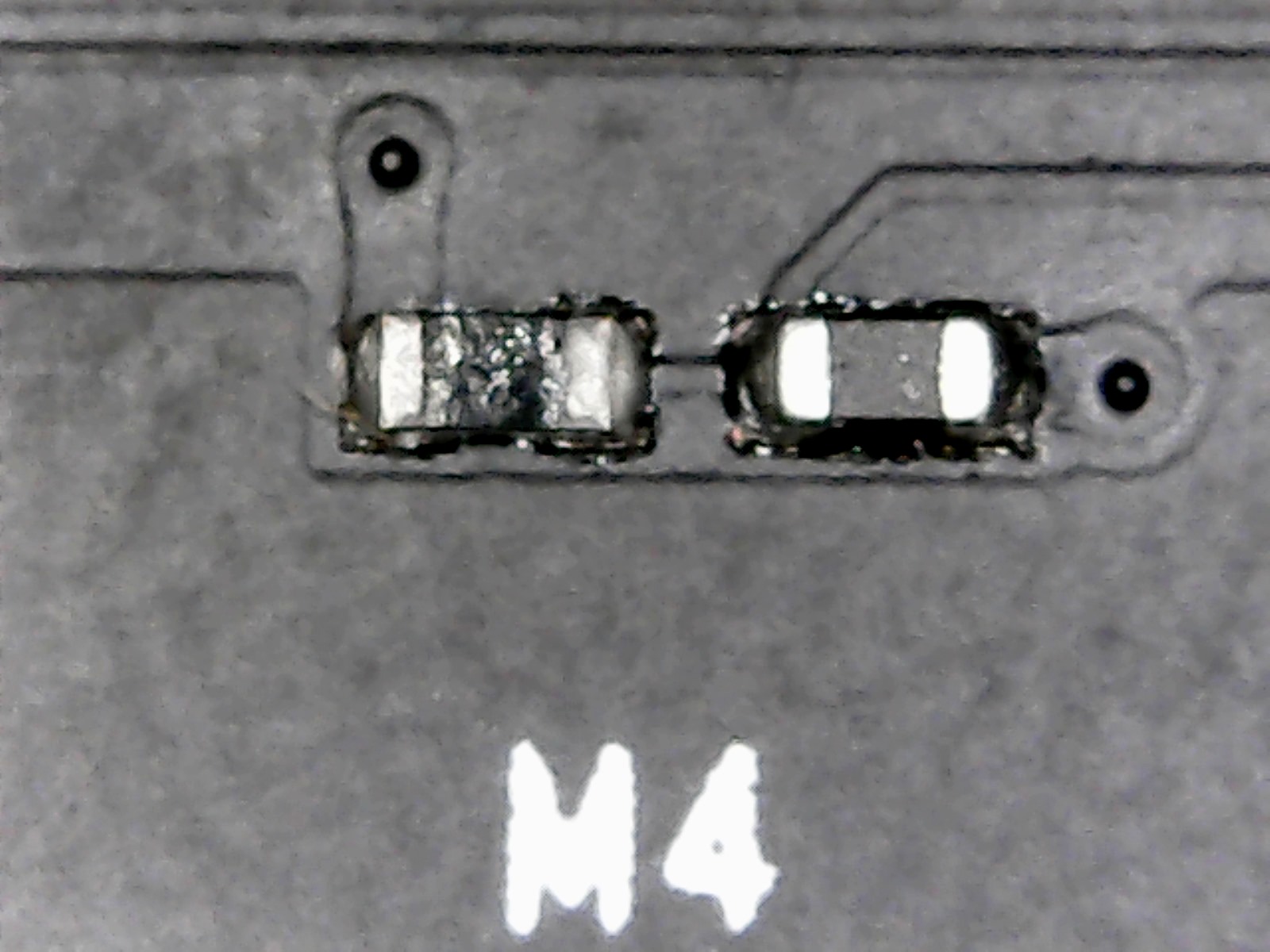 |
All values can only be read from the proprietary EVGA software, which was also to be expected.
The cooler: an old new acquaintance
Before we rush into the measurements, we also disassemble the cooler completely. However, since EVGA allows disassembly, suitable tools should also be available. As with the ACX cooler, the iCX also relies on the well-known sandwich principle, in which a plate-covering cooling plate cools the memory modules and voltage converters and in turn carries the large lamella cooler, as well as contributes to the stabilization of the structure.
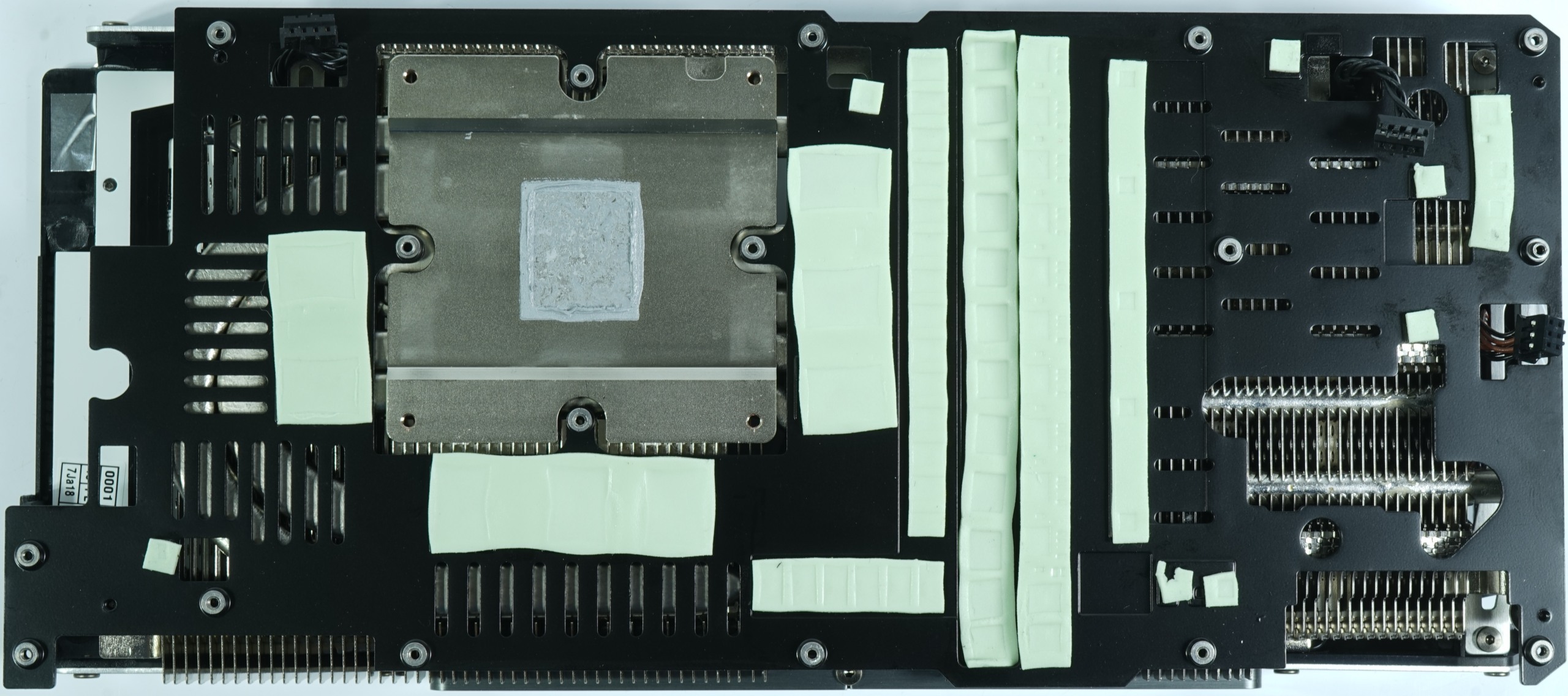
Some areas of this black cooling and mounting plate are provided with a kind of bumps, which are supposed to protrude into the slats and enlarge the surface. However, we are rather sceptical about the usefulness of such a round solution, because grooves would certainly have been much more performant.
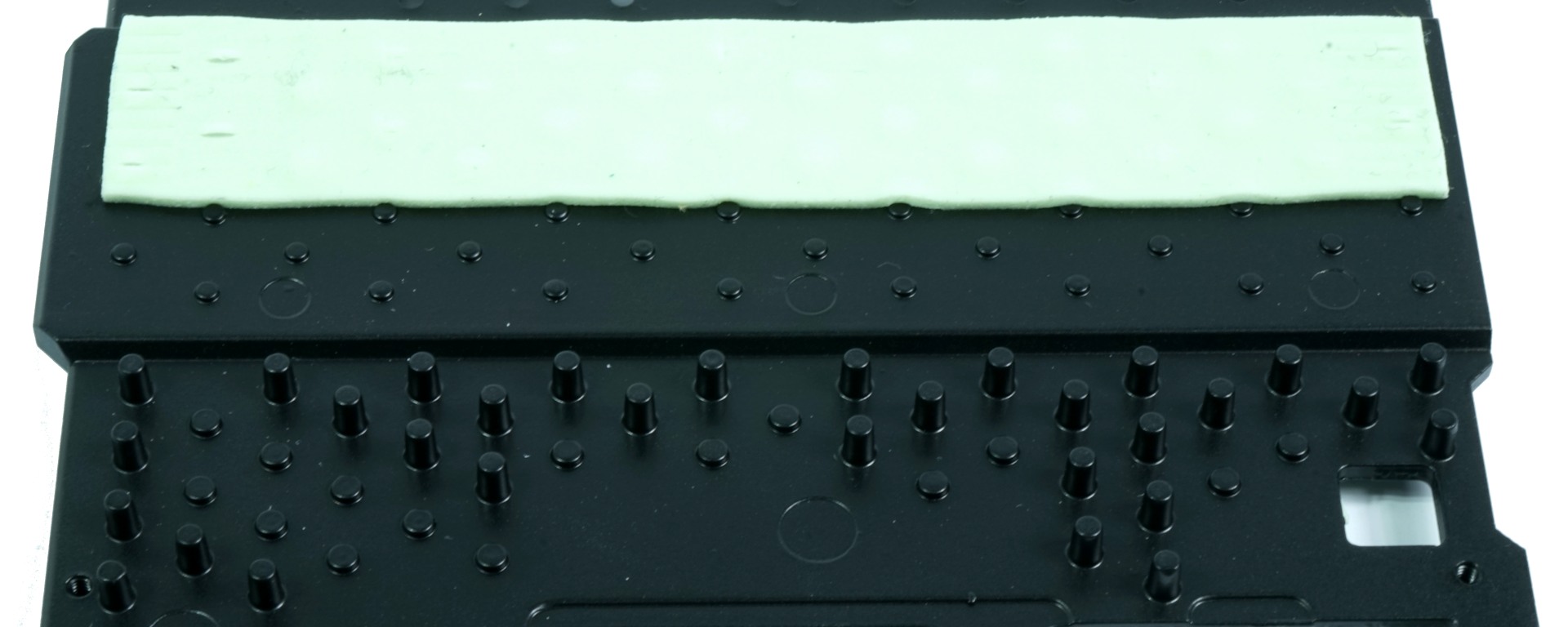
On this plate are both the complete heat sink that carries the fan modules and the upper cover and the LED backlight.
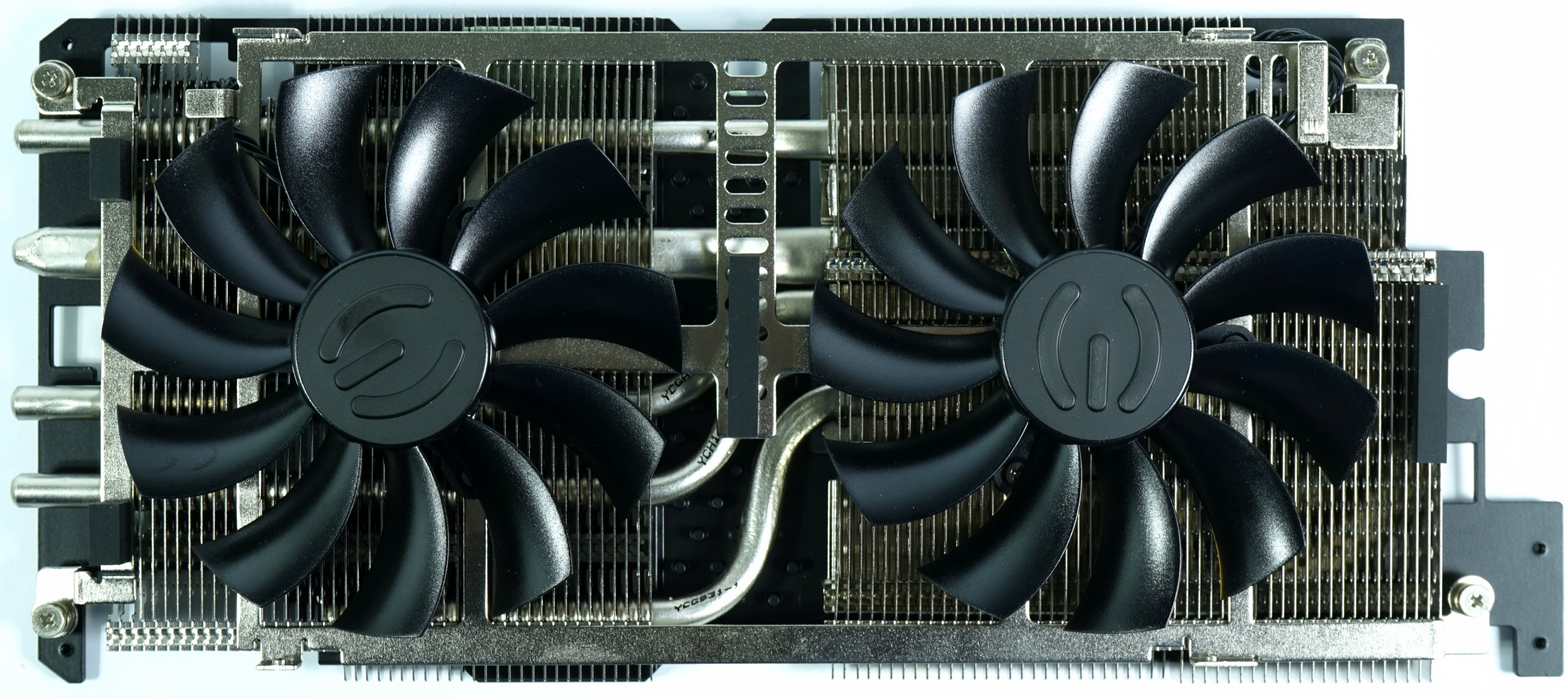 |
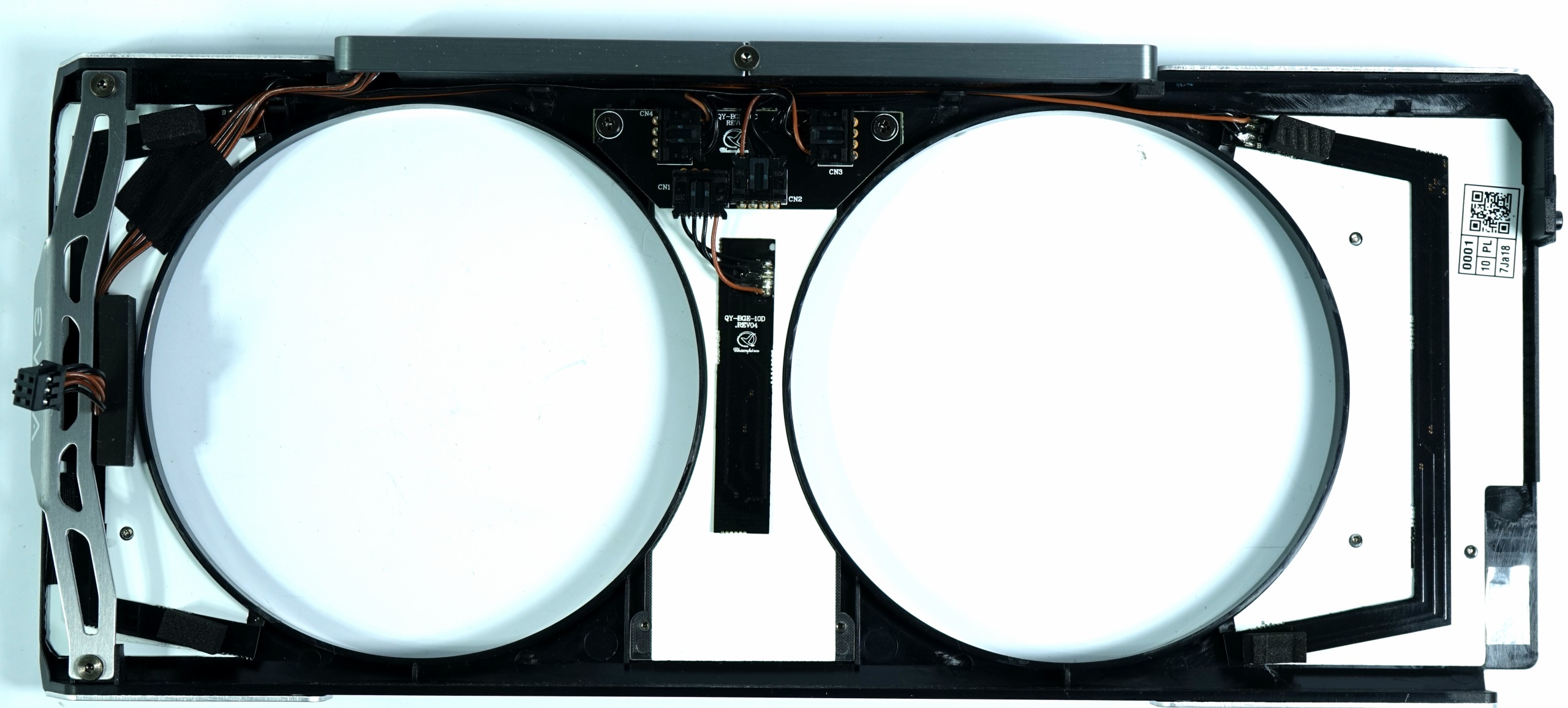 |
Let's take a look at the cooler itself. A nickel-plated heat sink for the GPU releases the waste heat to a total of a short and a continuous 8 mm, as well as four 6 mm heatpipes, one of which is also continuous.
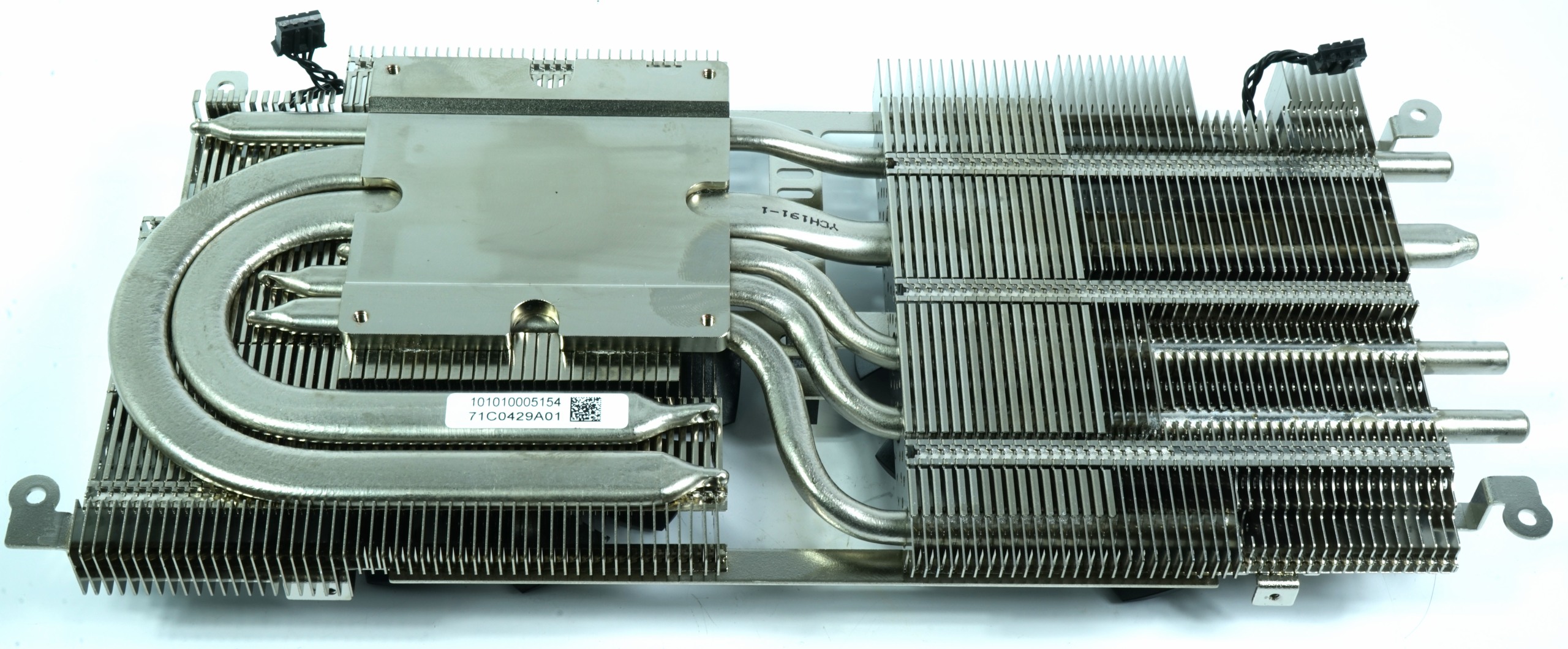
The vertically arranged slats were partially l-shaped, which according to EVGA should improve the cooling effect. If we want to be honest, instead of the new sandwich solution, we would have liked a massive cooler with integrated heat sinks for memory, voltage converters and coils, but you can't have (at least now) everything at once.

Let us now see what electrical power is absorbed and how well it is released as waste heat. The control freaks will certainly cheer, at least when it comes to temperature diagnosis.

































Kommentieren